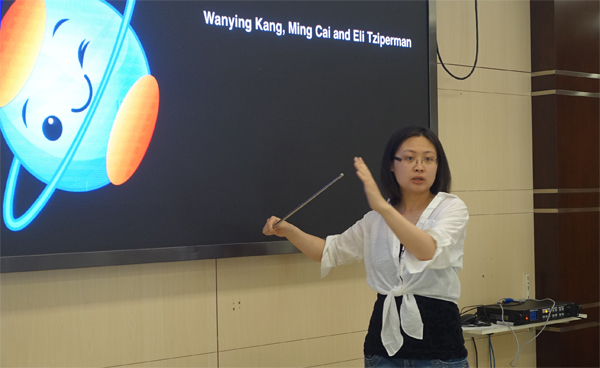
General circulation and thermodynamics of high obliquity climate: from 1D Eady model to 3D GCM
Dr. Wanying Kang
Harvard University, USA
2019年5月16日(星期四)10:00
3号楼1118会议室
报告会主持人:何编 副研究员
Abstract
High obliquity planets are expected to widely exist in the universe, motivating us to investigate their habitability, climate and general circulation. In my presentation, I first try to understand a counterintuitive result that high obliquity planets are warmer than their low obliquity equivalents. The previously suggested mechanism, ice-albedo feedback, is not the full story, as the relative warmness of high obliquity planets is evident even without ice. I then investigate whether the warmer climate under high obliquity will cause the planet to lose habitability at a lower insolation. Runaway greenhouse doesn’t kick in earlier with high obliquity, but the water escape, controlled by the stratospheric humidity, becomes much more significant.
Since the annual-mean insolation peaks at high latitudes under high obliquity, the polar regions tend to be warmer than the equator. The reverse temperature gradient configuration provides the chance to examine and generalize the current GFD theories. Will the meridional circulation and surface wind reverse direction together with the meridional temperature gradient? Will the baroclinic eddies remain similar to those on earth? Does the reverse gradient configuration provide useful insights for the real high obliquity planets? How will the high obliquity general circulation change with insolation and rotation rate? Are they observable? We seek answer to these questions in a model hierarchy: from a linear generalized Eady model, to 3D dry dynamic core, and finally to realistic high obliquity simulation.